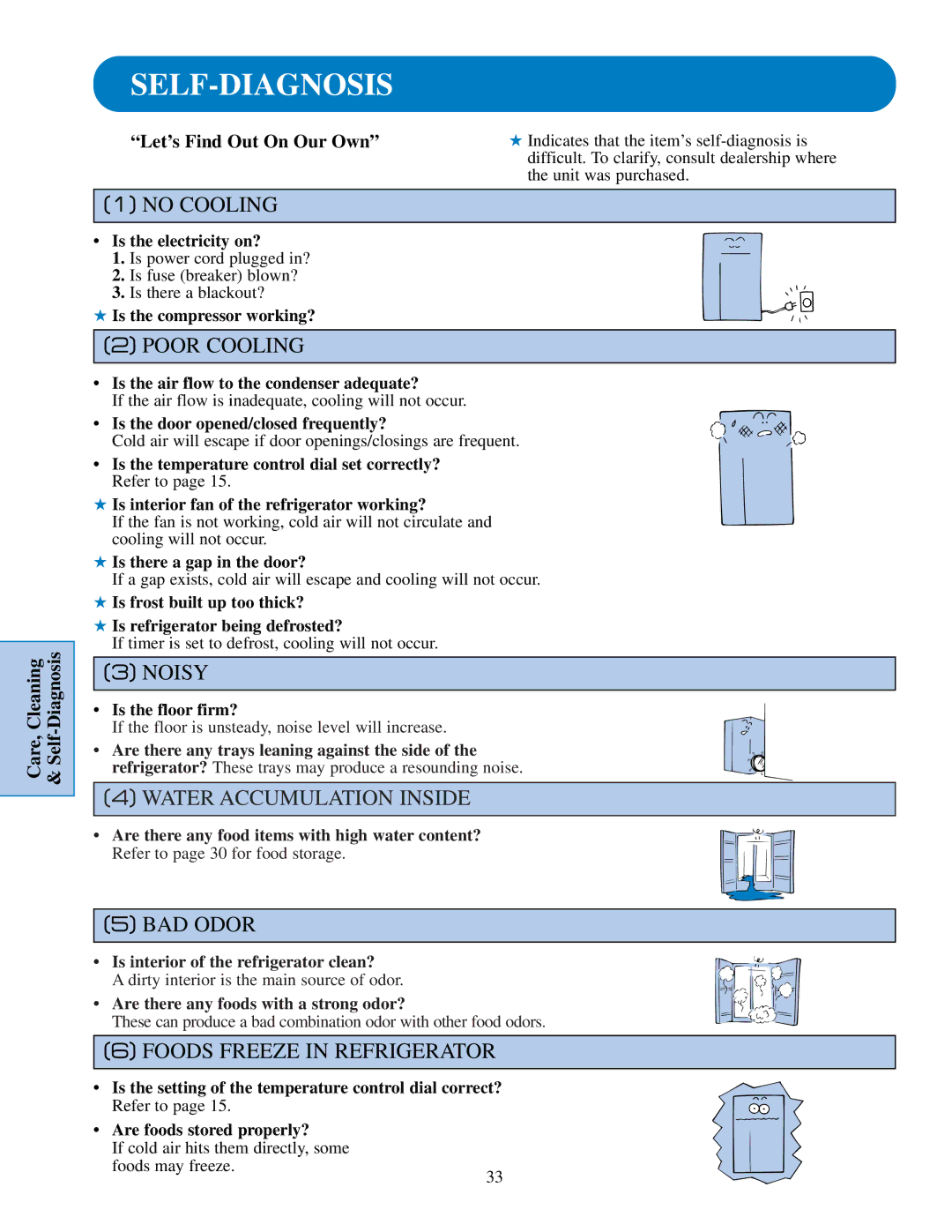
Care, Cleaning &
SELF-DIAGNOSIS
“Let’s Find Out On Our Own” | ★ Indicates that the item’s |
| difficult. To clarify, consult dealership where |
| the unit was purchased. |
(1)NO COOLING
• Is the electricity on?
1.Is power cord plugged in?
2.Is fuse (breaker) blown?
3. Is there a blackout?
★ Is the compressor working?
(2)POOR COOLING
•Is the air flow to the condenser adequate?
If the air flow is inadequate, cooling will not occur.
• Is the door opened/closed frequently?
Cold air will escape if door openings/closings are frequent.
•Is the temperature control dial set correctly? Refer to page 15.
★Is interior fan of the refrigerator working?
If the fan is not working, cold air will not circulate and cooling will not occur.
★Is there a gap in the door?
If a gap exists, cold air will escape and cooling will not occur.
★Is frost built up too thick?
★Is refrigerator being defrosted?
If timer is set to defrost, cooling will not occur.
(3)NOISY
•Is the floor firm?
If the floor is unsteady, noise level will increase.
• Are there any trays leaning against the side of the refrigerator? These trays may produce a resounding noise.
(4)WATER ACCUMULATION INSIDE
• Are there any food items with high water content?
Refer to page 30 for food storage.
(5)BAD ODOR
• Is interior of the refrigerator clean?
A dirty interior is the main source of odor.
• Are there any foods with a strong odor?
These can produce a bad combination odor with other food odors.
(6)FOODS FREEZE IN REFRIGERATOR
•Is the setting of the temperature control dial correct?
Refer to page 15.
• Are foods stored properly?
If cold air hits them directly, some
foods may freeze.
33
